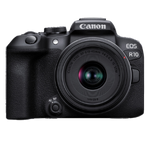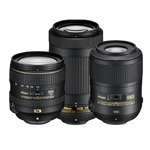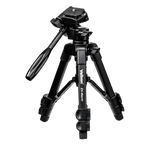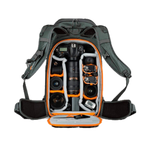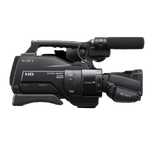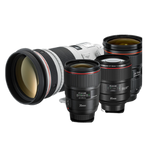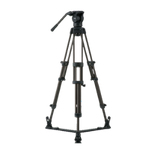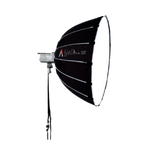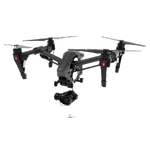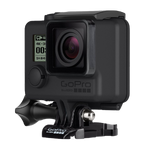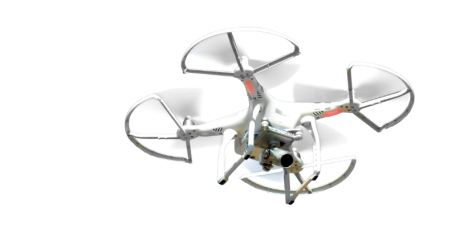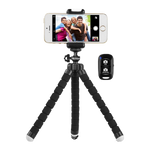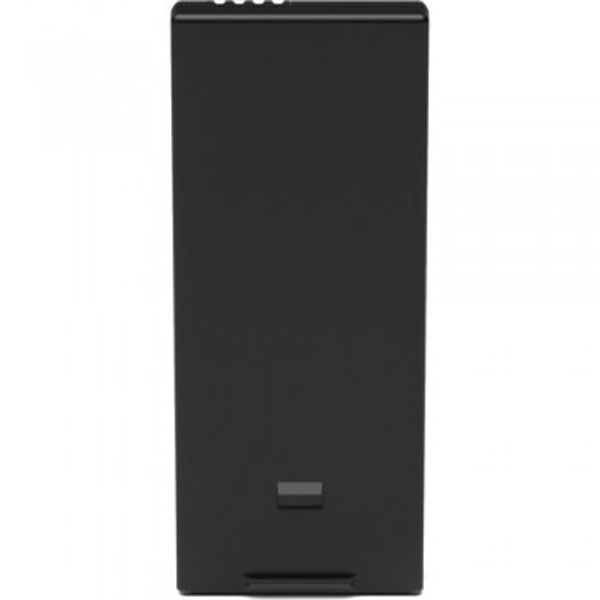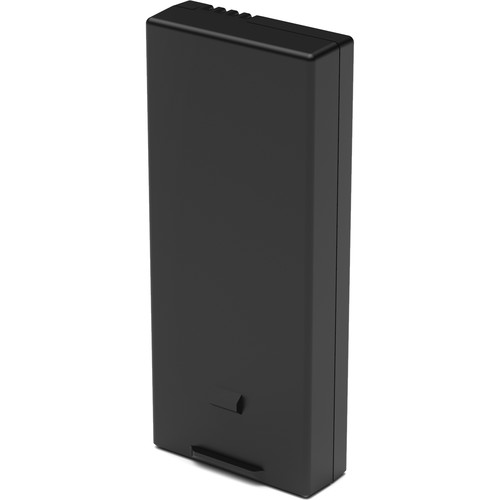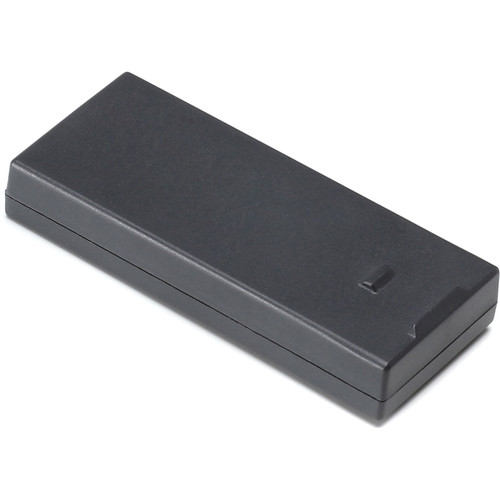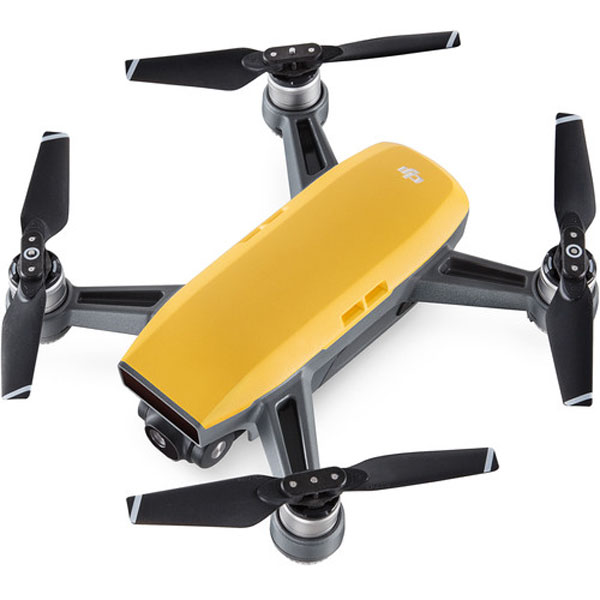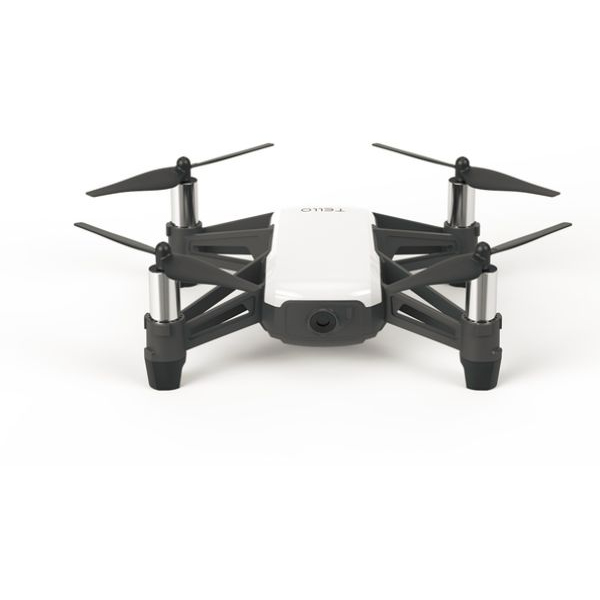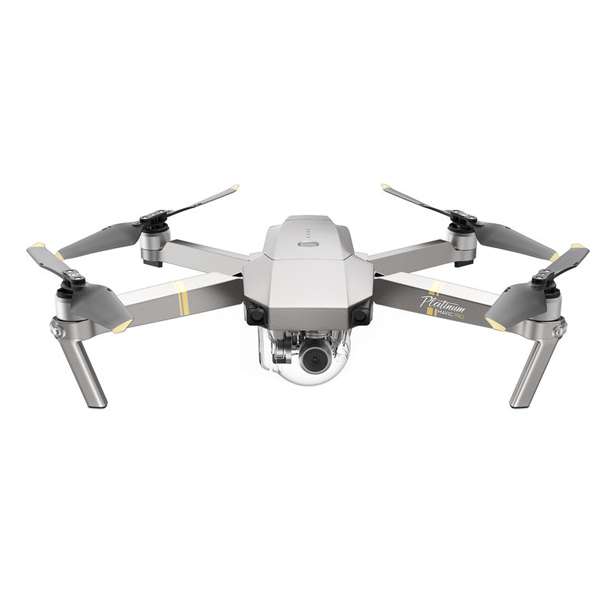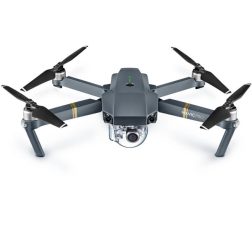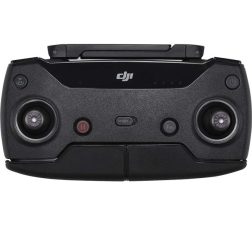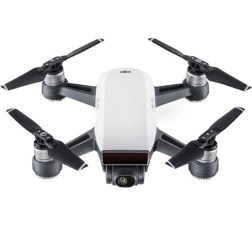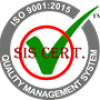| Content | The DJI Battery for Tello is a replacement battery for the Tello drone. This rechargeable lithium-ion polymer battery will yield an approximate 13-minute flight time on a full charge.The DJI Tello Part 1 Battery is an essential companion for your Tello drone. This compact, rechargeable lithium-ion battery ensures that your drone stays powered up and ready for action. With a capacity of 1100mAh, it provides ample flight time to capture breathtaking aerial shots and also explore the world from above.Designed with convenience in mind, this battery is easy to install and also replace. Allowing you to extend your drone's flying time without any hassle. It's lightweight and also small. Making it a perfect addition to your drone kit for on-the-go adventures.Whether you're a beginner or an experienced pilot. Having spare batteries like the DJI Tello Part 1 Battery is a must to make the most of your Tello drone. Don't miss a moment of fun and also exploration. Keep your Tello powered and soaring through the skies with this reliable and also high-quality battery. | The Mavic 2 Pro from DJI is a drone that balances power, portability, and professional-quality visuals with the inclusion of a 20MP Hasselblad L1D-20c gimbal camera. The camera delivers a 1" CMOS sensor with an adjustable f/2.8 to f/11 aperture, support for a 10-bit Dlog-M color profile, and 4K 10-bit HDR video capture.The Mavic 2 Pro utilizes a low-drag aerodynamic body design for achieving speeds up to 47.7 mph, a four-cell LiPo battery for up to 31 minutes of flight time, and low-noise propellers for filming without being distracting.This power and also performance are coupled with a variety of dynamic shooting modes and other capabilities that help you achieve cinematic results.In order to help you keep the Mavic 2 Pro in control and safe, DJI has provided OcuSync 2.0 video transmission technology which can transmit a video feed to the included controller from up to 5 miles away in Full HD 1080p quality.There's also omnidirectional obstacle sensing that provides object avoidance with sensors on all sides of the Mavic 2 Pro. All of this comes in a compact and foldable design that can be easily thrown into a backpack or large camera bag.Hasselblad L1D-20c Gimbal Camera
This gimbal camera is design to provide photographers and videographers with professional results. It possesses Hasselblad Natural Colour Solution (HNCS) technology. Which gives you the ability to capture up to 20MP aerial images in stunning color detail, and with the 1" CMOS sensor, you can take advantage of the extensive ISO range of 3200 to 12,800,The Hasselblad camera also supports the 10-bit Dlog-M color profile and 4K 10-bit HDR video capture. Dlog-M provides over 1 billion colors and also high dynamic range photos. Your 4K HDR video can immediately played back with correct color tones when the Mavic 2 Pro is attached to a 4K TV with HLG.The inclusion of an f/2.8 to f/11 adjustable aperture has you covered for both high- and low-light environments. Delivering bright and clear photos with smooth video.Hyperlapse Time-Lapse Shots
With a single tap you can use your Mavic 2 Pro to capture stunning time-lapse shots in Hyperlapse mode, processing everything automatically and saving you time in post-processing. You can even simultaneously save photos in JPEG and RAW on a microSD card (not included). Hyperlapse shots can be captured with four distinct modes:Free: Move the Mavic 2 where you want with total freedom.Circle: Select a subject for the Mavic 2 to automatically circle around.CourseLock: This flies the Mavic 2 on a locked course in a straight line, forward and backwards or right to left. Allowing you to adjust the gimbal along the way for dramatic results.WayPoint: Set a specific, savable flight path in 3D space for a single time-lapse. Or for multiple shots at different times to edit together later.Enhanced HDR Photos
With 14 EV the Mavic 2 Pro is designed to capture clear. Ghost-free images by blending together a sequence of individual photos taken at varying exposures.HyperLight Noise ReductionWith HyperLight mode switched on, the Mavic 2 Pro can capture low-light images with reduced noise.H.265/HEVC SupportBy utilizing the H.265/HEVC codec in your 4K videos. You can benefit from advanced compression that includes 50% more information than H.264/AVC. Resulting in higher-quality results and videos with more detail.OcuSync 2.0 Video Transmission
The OcuSync 2.0 system is designed to provide you with a high-quality and stable video feed. DJI has engineered OcuSync 2.0 to deliver 1080p feeds to your controller from up to 5 miles away.From that distance, DJI helps to keep things streaming smoothly with dual-band. Real-time auto-switching between 2.4 and 5.8 GHz bands. Footage is downloaded at up to 40 Mb/s and latency can be as low as 120 ms.OcuSync 2.0 also lets you share and also save your footage and images without having to download content from the drone itself. Footage can edited and uploaded to social media from the cache. And images can automatically saved to your mobile device.Omnidirectional Obstacle Sensing
To keep your Mavic 2 Pro safe and your footage pristine, DJI has covered all sides of the Mavic 2 with obstacle sensors:Forward Sensor: Dual vision sensors with a measurement range of up to 65', and a detectable range of 65 to 131'. The Mavic 2 is design to safely stop when obstacles are detected while flying at up to 31.3 mph.Downward Sensor: Dual vision sensors with a measurement range of up to 36', and a detectable range of 36 to 72'. It also has an infrared sensor that can measure up to 28' away.The sensors also allow for accurate hovering at up to 164' and also can detect land to land safely. A bottom auxiliary light helps the sensor in low-light conditions.Left and Right Sensors: Detects obstacles at speeds of up to 18 mph in both ActiveTrack and also Tripod modes.Backward Sensor: Dual vision sensors with a measurement range of up to 52', and a detectable range of 52 to 104.9'. The Mavic 2 is design to safely stop when obstacles are detect while flying at up to 27 mph.Upward Sensor: Infrared sensor can precisely measure at ranges of up to 26'.ActiveTrack 2.0 Sensing and Tracking
Precise Recognition: Maps a 3D view of the surrounding environment through the camera. And also forward dual sensors for greater recognition and accuracy.Trajectory Prediction: Algorithms help maintain tracking when the subject is temporarily blocked by an obstruction.High-Speed Tracking: In open environments, the Mavic 2 Pro can track subjects moving at up to 44.7 mph.Obstacle Sensing: Plan a flight path on the 3D map and also shoot your target without interruption. Obstacles are sensed, recognized, and also avoided with forward and backward sensors.Aerial Shooting Modes
Point of Interest (POI) 2.0: Thanks to vision and GPS distance measurement technologies. You can circle around and also shoot a specific subject.Waypoint 2.0: By tapping the desired waypoints and point of interest in the app. You can plan a flight path quickly and save it for your next flight.Asteroid: The Mavic 2 quickly flies down from a height while spinning in on a subject.Boomerang: Centering on a subject. The Mavic 2 will fly around it in an elliptical pattern until reaching its starting location.Additional Features- Low-drag body design helps provide a top speed of up to 47.7 mph.
- Four-cell LiPo battery can provide up to 31 minutes of flight time.
- A combination of an FOC sinusoidal drive ESCs and also low-noise propellers keeps flights quiet.
- Panorama image mode with support for Sphere, 180, Horizontal, and also Vertical modes.
| The Phantom 4 Pro from DJI boasts a 3-axis-stabilized gimbal camera with a 20MP. 1" CMOS sensor capable of shooting up to 4K/60fps video and well as photo bursts at up to 14 fps. The hull has been updated from the previous Phantom 4, now featuring magnesium.Alloy construction for increased rigidity and reduced weight. The Flight Autonomy system adds dual rear-vision sensors plus infrared. Sensing for a total of five directions of obstacle sensing and four directions of obstacle avoidance. Compared to the Phantom 4 Advanced variant, the Pro features the noted four, rather than two. Directions of obstacle avoidance and offers a 5.8 GHz channel for the Lightbridge link, in addition to 2.4 GHz.Gimbal Camera with 1" CMOS Sensor
The onboard camera features a first for the Phantom line: a 1-inch 20-megapixel CMOS sensor. A custom-engineered lens made up of eight elements is arranged in seven groups. The camera boasts a mechanical aperture that eliminates rolling shutter distortion that can occur. When taking images of fast moving subjects or when flying at high speed and a mechanical focus.1" CMOS Sensor
Sensor size is often more important to image quality than the number of pixels. Because a larger sensor has dynamic range, better signal-to-noise ratio, and boosted low light performance. The 1" 20MP CMOS sensor in the Phantom 4 Pro is almost four times the size of the Phantom 4's 1/2.3" sensor. It uses larger pixels and has a maximum ISO of up to 12,800 as well as increased contrast.H.264 and H.265 4K Video Recording
Powerful video processing supports H.264 4K videos at 60 fps or H.265 4K at 30 fps. Both recorded in a 100 Mbps bitrate. Advanced sensors and processors ensure everything is captured. With more image detail and the image data needed for manipulation in post-production.Production-Optimized 4K
An enhanced video processing system allows video to be captured in cinema- and production- optimized DCI 4K (4096 x 2160) at 60 fps and a bitrate of 100 Mbps. The Phantom 4 Pro also supports the H.265 video codec at 30 fps in 4K resolution.For a given bitrate, H.265 doubles the amount of image processing as H.264, resulting in significantly enhanced image quality from a more efficient compression. Record in the high dynamic range D-log mode to make the most of this image data for color grading.High Resolution Lens
The Phantom 4 Pro camera has an aerial-optimized f/2.8 wide-angle lens with a 24 mm equivalent focal length. It features eight elements ? two aspherical ? arranged in seven groups that fit into a smaller, more compact frame. Its images are consistently detailed with low distortion and low dispersion, ensuring that photos and videos are sharp and vivid.Mechanical Shutter
Capturing objects moving at high speed has always been a challenge for flying cameras using an electronic shutter. This is why the Phantom 4 Pro is the first DJI Phantom to use a mechanical shutter and a large-aperture prime lens.A maximum mechanical shutter speed of 1/2000-second eliminates motion blur and "jello effect" caused by shooting a fast moving object with a rolling electronic shutter. The electronic shutter has also been improved with a max shutter speed of 1/8000-second, and a there is Burst Mode shoot capable of shooting 14 fps at 20 megapixels to catch the perfect moment.Remote Controller with Lightbridge HD Video Link
The Phantom 4 Remote Controller Included controller integrates an upgraded Lightbridge HD video transmission system that adds 5.8 GHz transmission support. The ability to choose between 2.4 GHz and 5.8 GHz allows pilots to cut through interference and eliminates image lag caused when flying in an area with extensive 2.4 GHz frequency use.Normally, Wi-Fi video transmission systems use a 2.4 GHz frequency to work with a controller using a 5.8 GHz frequency, as this prevents interference that can occur when both use the same frequency.Lightbridge HD Video Link
The Lightbridge HD video transmission system used in the Phantom 4 Pro uses TDM (Time Division Multiplexing) to transmit signals, allowing it to send controller signals and receive video transmission signals at the same frequency. As the 2.4 GHz frequency band is often affected by Wi-Fi, 4G cell towers, and other types of interference in urban areas, a 5.8 GHz band will increase transmission reliability.When switched on, the Phantom 4 evaluates local signal levels, automatically choosing the transmission frequency with the lowest level of interference. This enables a maximum video transmission range of 4.3 miles.Intelligent Flight ModesDraw
With Draw, simply draw a route on screen and the Phantom 4 Pro will move in that direction while keeping its altitude locked. This allows the pilot to focus on camera control and enables more complex shots. There are two Draw modes that can be used in different scenarios:Standard: The aircraft follows the route at a constant speed with the camera facing in the direction of flight.
Free: The aircraft only moves along the route when instructed. In this mode, the camera can face in any direction during a flight.ActiveTrack
Following fast-moving objects can be very challenging, but advanced, image-recognition algorithms used by the Phantom 4 Pro allow it to recognize and track an object while keeping it in frame. This algorithm also recognizes a range of subjects, from people to vehicles to animals, and will adjust its flight dynamics to match, ensuring smoother shots. Pilots can now choose between:Trace: Follow behind or in front of a subject, avoiding obstacles automatically.
Profile: Fly alongside a subject at a variety of angles to get profile shots of the subject.
Spotlight: Keep the camera trained on a subject while the aircraft flies almost anywhere.TapFly
Fly in any direction visible on-screen with a simple tap. Tap anywhere on-screen to smoothly adjust the direction of flight while automatically avoiding obstacles and tap the screen again or use control sticks to change direction. An AR route function shows the aircraft's real-time flight direction for reference as its route is adjusted.As it can be difficult to control altitude, course, speed and camera pitch simultaneously using joysticks, TapFly Free allows a pilot to set the direction of flight, allowing them to turn the Phantom 4 Pro or tilt the gimbal as required without changing the direction of flight. In total, there are now three TapFly modes:TapFly Forward: Tap to fly in the selected direction
TapFly Backward: Tap to fly in the opposite direction of the tap, i.e. tap in the bottom right corner of the screen to fly backward towards the top left.
TapFly Free: Lock the forward direction of the Phantom without locking the camera direction allowing it to turn as it flies.Note: Obstacle Avoidance is not available with TapFly Free.Return to Home
In its Return to Home mode, the Phantom 4 Pro can automatically choose the best route to return home depending on environmental conditions. It records its route as it flies, allowing it to return along the same route avoiding obstacles if the control signal is disconnected.Based on its altitude at the time of disconnection, the Phantom 4 Pro is also able to adjust its flight path to avoid obstacles it has seen during its flight. At takeoff, the Phantom 4 Pro will record the scene below and compare its recording with what it sees as it returns, for more precise landing.It can also detect the ground to see whether there is suitable spot for landing. If any obstacles are found, or there is water on the ground, it will alert the pilot and hover at an appropriate height, helping the aircraft to land more safely.Gesture Mode
With Gesture Mode, selfies can be captured using a few gestures without the remote controller. Computer vision technology allows the Phantom 4 Pro to take instructions through gestures. The subject simply lifts their arms when facing the camera and the aircraft will recognize. This movement by locking on and placing the subject in the center of the frame.When ready for a photo, the subject holds their arms out to signal the aircraft. A three second countdown will begin, making time to strike a pose. Allowing moments to be captured without the remote control.Flight Control SystemFlight Modes
Different productions require different flight characteristics, and also the Phantom 4 Pro offers three modes for flight: P, A and S. Switching between them allows pilots to get the control they need. Whether they seek smoothness, simplicity, intelligent navigation, or speed.In Position Mode (P), TapFly, ActiveTrack, obstacle sensing and positioning features are available. Sport Mode (S) adds extra agility and higher speed, reaching 45 mph . Attitude Mode (A) switches off satellite stabilization and holds the Phantom 4 Pro's altitude.It is ideal for experienced pilots looking to capture smoother footage. Tripod Mode, which limits speed to 4 mph provides precision control for fine framing and also indoor flying. Both the infrared sensing system and also vision sensors are enabled in these modes for a safer flight experience.Sensor Redundancy
The Phantom 4 Pro features dual compass modules and dual IMU units. Making it more reliable when compared to many hexacopters and also octocopers. Compasses and IMUs are important sensors to ensure a stable flight. And also the Phantom 4 Pro constantly compares the data it receives through both pairs.This data is run through various algorithms to check accuracy. And also any inaccurate data is simply discarded without affecting flight, keeping flight steady and also reliable.Intelligent Battery System
Professional aerial imaging benefits from longer flight times. The Phantom 4 Pro features a maximum flight time of 30 minutes, providing more time in the air to capture the perfect shot. The DJI GO app shows battery lifetime and also calculates remaining flight times according to distance traveled and also more.It will give alerts when it reaches a minimum safe amount required for a safe journey back to the takeoff point. An advanced battery management system is also in place to prevent overcharging and also over draining. When placed in longer term storage, batteries will discharge power to maintain good health. | Though agile in the air, drones can be bulky and cumbersome when on land. Not so with the sunrise yellow Spark from DJI, which won't hold you back no matter what the adventure. This compact quadcopter features an integrated camera with motorized stabilization to capture 12MP photos, 1080p Full HD videos, and even aerial selfies.The drone's compact size, 31 mph top speed, and up to 16 minutes of flight time will appeal to a variety of users, from FPV enthusiasts to racers to those just looking for more dynamic shots than are possible with simply a smartphone or camcorder. The drone features GPS- and vision-based navigation for outdoor or indoor use, a variety of flight modes, and a 3D obstacle-detection system.Integrated Camera and Gimbal
A 2-axis gimbal-stabilized camera backed by a 1.2/3" CMOS sensor allows you to capture up to 12MP still photos and record 1080p/30 Full HD video.2-Axis GimbalSpark's 2-axis mechanical gimbal and UltraSmooth technology dramatically reduce shake and rolling shutter effect, keeping shots stable without loss of detail.High-Grade OpticsSpark's camera features an f/2.6 aperture wide-angle lens with a 25mm-equivalent focal length for a wide angle of view. Five elements are arranged into a single group that fit into a compressed frame.Pano ModeSpark shoots horizontal or vertical panoramas by automatically adjusting its gimbal and heading.Shallow Focus3D vision technology helps capture photos with a shallow depth of field.Photo Modes- Single Shot
- 3-Frame Burst Shooting
- Auto Exposure Bracketing (AEB)
- Intervals from 2 to 60 Seconds
720p Video DownlinkWi-Fi enables connecting to a mobile device as far away as 328.1', and at a maximum height of 164'. Both 2.4 GHz and 5.8 GHz signals are supported for better reliability where the spectrum is congested. In addition to app-based functions, you can view a live video feed at up to 720p resolution.Flight Control System
Navigation SystemThe Spark can position itself accurately in a range of environments, beyond what is possible using basic "optical flow" technology, which depends on a single downward-facing camera and assumes that the ground below is always flat.Spark can sense its environment in three dimensions and react to it, ensuring it hovers steadily, whether it is high up on the side of a cliff where downward sensors have no target, or under a forest canopy where satellite positioning is blocked and the ground is covered in uneven markings and obstacles.Quick LaunchWith FaceAware, Spark lifts off from your hand by recognizing your face. It takes off and hovers in place within seconds of powering on.Gesture-Base Control
Tell Spark what to do without using a controller or app. Simply use hand gestures to maneuver and take photos.- SELFIES: ?Raise your arms, wave your hand, or make a frame with your fingers to maneuver Spark and shoot photos
- PALMCONTROL: ?Spark can follow your hand movements or even take off and land on your palm
QuickShot Smart Video Modes
Spark helps you create professional-looking areal videos thanks to the following modes:- ROCKET: ?Ascend with the camera pointing downward
- DRONIE: ?Fly backward and upward, with the camera locked on your subject
- CIRCLE: ?Circle around a given target
- HELIX: ?Fly upward, spiraling around your subject
ActiveTrack Subject Tracking
With ActiveTrack, just tell the Spark who to track and it handles the rest. No GPS bracelets or transmitters are required. The Spark has been trained to detect and recognize a number of common subjects including people, bike riders, vehicles, and even animals. Two settings are offered:- TRACE: ?Track your target from in front or behind, or even circle around it
- PROFILE: ?Follow your subject from a fixed perspective
TapFly
When you tap on your phone's screen, software translates your touch into a heading, including whether you want it to climb or descend. When you want to change direction, just tap somewhere else on your screen and the Spark will smoothly turn to the new destination. Two modes are available:- DIRECTION: ?Keep flying in the direction you tap on screen
- COORDINATE: ?Tap the screen and fly to that spot while maintaining altitude
Sport Mode
Sport Mode was designed for fun, giving the Spark a top speed of 31 mph, all the while ramping up agility and responsiveness, to give you a taste of drone racing. You can also use it to film something fast, or zip out to catch a shot before the moment passes. Even in Sport Mode, the Spark will rapidly come to a stop if you let go of the controls.FlightAutonomy
Spark's FlightAutonomy System features a main camera, vision positioning system (VPS), 3D object sensing, GPS, a high-precision IMU, and a 24-core controller. Together these allow Spark to hover accurately anywhere with VPS assistance at up to 98', sense obstacles from up to 15' away, and land safely.Return to Home
Where GPS is available, the Spark it able to return to its takeoff point and land itself. This will happen automatically if the battery gets too low, the controller signal is lost, or you press the RTH (Return to Home) button on the app or controller. Spark is able to sense and maneuver around obstacles as it returns.Flight Protection
DJI's GEO system lets you know where drone flights may raise safety or security concerns, such as near airports or stadiums.Dual Frequency 2.4G and 5.8G Radio
The Spark's remote controller and Wi-Fi work on both 2.4 GHz and 5.8 GHz range frequencies. This means the system can take advantage of the less-crowded 5.8 GHz part of the spectrum when the 2.4 GHz range is saturated.DesignBuilt for SpeedSpark features an aerodynamic profile that enables it to soar through the air with minimal wind resistance. Performance and stability are enhanced by keeping the gimbal flush with the aircraft. This enables flying in strong winds and the ability to achieve a top speed or 31 mph in Sport Mode.FPV Flight
Using Sport Mode, FPV is enabled by default, so the camera moves with you as you fly. To enhance the immersive experience, Spark can be paired with the separately available DJI Goggles.DJI GO Mobile AppEdit and ShareThe DJI GO 4 app features automatic editing templates and an array of filters. Quickly edit videos and share them straight to social media.Intelligent Flight BatterySpark uses a high-energy-density LiPo flight battery for optimal performance. 12 intelligent protection functions help ensure safe flight. Additionally, Spark's battery estimates remaining flight time, letting you know when to land in real time. | The DJI Ryze Tech Tello Quadcopter lets you shoot over longer periods of time, as it comes packaged with three batteries, instead of one, and a 3-battery charging hub. Each battery will power up to 13 minutes of flight on a full charge.The Tello drone's tiny form factor and smart Intel processor enable it to perform exciting aerial tricks on a whim, all through smartphone control. Download the free Tello app and get going, with intuitive controls for entertaining flying maneuvers.At the front of the Tello is a camera capable of streaming 720p video back to your smartphone and capturing 5-megapixel photos in flight. The intelligent flight processor can coordinate camera movements for some custom shooting angles. The vision positioning system uses a downward-facing camera to ensure stable hovering when desired.Aside from the previously mentioned batteries and hub, the Tello also includes four pairs of propellers and a set of propeller guards. Multicolored top plates are available separately to customize the look of your drone.Great for Beginners
Flying the Tello drone is easy. Just pull out your phone with the app, and begin flying by literally tossing the drone in the air. For those feeling adventurous, the Tello is VR-headset compatible for FPV flying. Swipe on your smartphone to activate 8D flips for slick aerial moves. If you want more tactile control, connect a Bluetooth controller to your smartphone, and fly more traditionally.Built-In Camera
The Tello can transmit 720p video or 5MP photos back to your smartphone from up to 330' away using its dual-antenna array. Electronic image stabilization helps keep your photos and videos steady. Coordinated flight moves let you capture short videos with 'circle', '360', and 'up-up-and-away' styling for a professional touch.Use Tello to Learn and Create
DJI Ryze Tech Tello Quadcopter programmable with Scratch, an MIT-developed visual coding system. Which allows kids and teens to learn the basics of programming while having fun. If you're a more advanced user, you can also develop software applications using the Tello SDK.Safety Features
Tello's lightweight, yet durable design features software and hardware protections. Making it easy to fly with confidence.- Auto Takeoff/Landing: Lift off or land with a single tap
- Low-Battery Protection: Alerts go off when your battery gets low
- Failsafe Protection: Land safely, even if you lose connection
- Vision Positioning System: Downward-facing camera that facilitates precise hovering
| The Mavic Pro Platinum from DJI provides an upgraded motor and propellers that are designed to provide increased performance when compared to the Mavic Pro. The Pro Platinum also packs features once thought possible only on much larger platforms into a compact quadcopter that is snappy, agile, and captures high-resolution images.The drone features an advanced flight control system that draws on a host of sensors including a ground-facing camera, ultrasound, GPS, dual redundant IMUs, and more to keep track of where it is flying in 3D space and even avoid collisions.The Mavic Pro Platinum works in tandem with DJI's GO mobile app for accessing settings, getting a telemetry readout, viewing a low-latency video feed, and even editing and sharing your footage.In addition, traditional joystick style controls, you can fly with simple tap-based commands, and the Mavic Pro Platinum can even recognize gestures for the perfect selfie.Platinum Design
Increased Flight TimeCompared to the Mavic Pro, the Pro Platinum features new FOC ESC sinusoidal drivers that are designed to provide improved motor communication and control. The improved motors deliver a maximum flight time of 30 minutes to the Mavic Pro Platinum.Noise Reduction
Compared to the Mavic Pro, the Pro Platinum includes upgraded 8331 propellers that have been engineered to provide a decrease in noise. The new aerodynamic design, the Pro Platinum's aircraft noise has been reduced by up to 4 dB.Long Range FlyingOcuSync Transmission TechnologyOcuSync long-range-transmission technology is capable of relaying a signal up to 4.3 miles line-of-sight while supporting 720p HD video (1080p HD transmission in short-range mode). Every time you fly, OcuSync scans a range of available frequencies to find and use the one.With the least interference to give you more reliability and control. Tightly integrated with the DJI GO app, OcuSync transfers vital statistics of the Mavic to you in real time, and can also be used to download photos and videos at up to 40 Mbps while flyingEfficient Design
Custom-designed, high-energy-density batteries; an optimized propulsion system; and advanced power management give the Mavic a much longer flight time than many compatible platforms in its size class. This results in flight times of up to 27 minutes under ideal conditions and up to 21 minutes for average flightsIntegrated Camera and Gimbal3-Axis Gimbal StabilizerUsing three specially miniaturized brushless motors and advanced algorithms, the camera moves in the opposite direction to the Mavic, cancelling out unwanted movement for the smoothest possible videoDCI & UHD 4K and Full HD Video
The Mavic Pro camera shoots 4K video (up to 4096 x 2160) at 30 frames per second and Full HD 1080p at 96 frames per second, so you can create incredible slow motion. Its minimum focusing distance is just 19", making it perfect for everything from the ultimate aerial selfies to landscape shotsActiveTrack Subject Tracking Modes
With ActiveTrack, just tell the Mavic who to track and it handles the rest. No GPS bracelets or transmitters are required. The Mavic has been trained to detect and recognize a number of common subjects including people, bike riders, vehicles, and even animals.Once you have marked your subject, you can fly around them to create a huge variety of shots, depending on the mode you are in. As the Mavic is tracking, you can even select exactly where you want the subject in the frameThree modes are available:
Trace - Follow behind or in front of your subject, or circle it as it movesProfile - Fly alongside your subject
Spotlight - Keep the camera trained on your subject while you fly almost anywhere12MP Raw/JPEG Still PhotosEvery photo you take with the Mavic can be as big as 12 megapixels, with the ability to save in DNG raw or JPEG. You can even flip the camera 90-degrees for portrait oriented shots, just like you do with your phoneSelfie Mode with Gestures
Put away your controller and phone to get that perfect, natural selfie. All you need to do is put the Mavic in Gesture Mode and walk in front of it. The Mavic will automatically detect you.Raise your arms or wave to it to make it follow you, and when you're ready for your photo, make a box shape with your fingers. The lights under the Mavic's front arms will start to flash, and you will have three seconds to strike your pose before it takes a photoTripod Mode
Tripod Mode caps the Mavic's maximum speed at just 2.2 mph, while the control stick sensitivity of the remote controller is dulled to give you the precision you need for accurate framing. It is also great for flying indoors or other small spaces where the Mavic's normal speed may make it more challenging to flyFlight Control System
FlightAutonomyFlightAutonomy is the Mavic's brain and nervous system: a complex network of hardware and software that includes five cameras, GPS/GLONASS, a pair of ultrasonic range finders, redundant sensors, and a group of 24 CPUs to process and fuse all of this informationNavigation System
The Mavic is able to position itself accurately in a range of environments, beyond what is possible using basic "optical flow" technology, which depends on a single downward-facing camera and assumes that the ground below is always flat.Mavic is able to sense its environment in 3-dimensions and react to it, ensuring it hovers steadily, whether it is high up on the side of a cliff where downward sensors have no target, or under a forest canopy where satellite positioning is blocked and the ground is covered in uneven markings and obstaclesPrecision Landing
Precision Landing technology means the Mavic is able to automatically land almost exactly where you took off. Every time you take off, the two downward-facing vision sensors record a burst of video of the ground pair it with satellite coordinates.When you tell the Mavic to fly home, it will return to that coordinate, match the video, and land back at your feeCollision Avoidance
As the Mavic flies, it scans the world around it. Creating a 3D map that tells it exactly where it can fly and what it needs to avoid. Because it uses vision processing, it can see up to 98' in front and can accurately measure distance up to 49' in front. Making it significantly more accurate than sonar based avoidance technologies.When the Mavic detects an obstacle and sees a way around it. It will simply adjust its route to fly around it. If it can't see a way around, it will slow to a stop gently and hover until you tell it what to do next.This obstacle avoidance system is activated in every Intelligent Flight Mode. Including all ActiveTrack modes, TapFly, and Terrain Follow.If you use Automatic Return to Home, it switches on too, so that as the Mavic makes its way back to you. It won't bump into anything in its path. Avoidance is effective when flying at speeds up to 22 mphSport Mode
Sport Mode was designed for fun, giving the Mavic a top speed of 40 mph. All the while ramping up agility and responsiveness, to give you a taste of drone racing. You can also use it to film something fast, or zip out to catch a shot before the moment passes. Even in Sport Mode, the Mavic will stop immediately if you let go of the controlsDual-Sensor Redundancy
In flight, the Mavic uses its compass to tell it. Where it is heading and the Inertial Measurement Unit (IMU) to tell it how it is flying. An interruption in the data flow from either of these may cause it to fly less reliably.Which is why the Mavic has not one, but two of each. Whenever the system detects an inconsistency in one. It switches to the other, keeping your flight steady and reliableTerrain Follow
When you are flying over changing terrain, like following bikers riding uphill. The Mavic's Terrain Follow function uses height information gathered by the on-board ultrasonic system.And its downward-facing cameras to keep you flying at the same height. Above the ground even as the ground moves. Just set the height from the ground you want - from 9 to 33' - and focus on getting the right shotDJI GO Mobile AppDJI GO is your Mavic's control center. When your phone or device is connected to the Mavic, it shows you everything the camera sees in near real-time. So you can set up and frame every shot as if you are actually there.It also gives you full manual camera controls for photos and videos, including ISO. Shutter, and file format. It even lets you fine-tune your Mavic so that it flies exactly how you want it toFly-by-Phone
Sometimes a phone is all you need to fly. Not only does the Mavic support flying on your phone with virtual joysticks. But you also have full access to all of its Intelligent Flight Modes: TapFly, Trace, Spotlight, Profile, and CircleTap FlyingWhen you tap on your phone's screen, software translates your touch into a heading. Including whether you want it to climb or descend. When you want to change direction. Just tap somewhere else on your screen and the Mavic will smoothly turn to the new destinationShoot. Edit. Share.Automatic video editing templates, simple video editing functions. And easy photo and video management bring together the tools you need to make epic videos right in your phone.All you need to do is choose the shots you think will amaze, which you can then share straight to Facebook. YouTube, Twitter, Instagram, and more, as well as SkyPixel, DJI's own community dedicated to aerial imagingDJI Goggle CompatibilityThe separately available DJI Goggle are FPV goggles designed to make flying totally immersive. The feature two 1080p LTPS displays with a wide 85 angle of view. To give you a bird's eye view of the world around you.Built-in OcuSync connectivity means that it links directly to the. Mavic and not through a cable or a Wi-Fi link to the controller. This seamless connection yields a delay of only 120 millisecondsIntelligent Flight Batteries
The Intelligent Flight Battery has its own integrated battery-management system that takes into account everything from remaining voltage. Amount of power being used, temperature, and more to calculate remaining flight times. So you always know when to head home.It also has a host of protection mechanisms in place to prevent overcharging and over draining. Both of which can damage a LiPo battery permanently.When placed in longer term storage, LiPo batteries should only be kept at 50% charge. Any more or less could cause permanent damage. If left unused, DJI Intelligent Flight Batteries will discharge power until 50% to maintain good healthIf you live in a cold place or plan to fly on a winter break, low-temperature protection will activate. This controls available propulsion power based on the temperature of the battery. So that only a fully-warmed-up battery can offer full power |

